Which Battery Technology Is Best Between 18650 21700 and 32650
In the ever-evolving world of rechargeable batteries, three cylindrical formats have emerged as popular choices: 18650, 21700, and 32650. Whether you’re powering an electric vehicle, building a DIY power wall, or choosing a battery for your flashlight or vape mod, selecting the right battery size and technology can significantly affect performance, longevity, and efficiency. So, which battery technology is best between 18650 21700 and 32650? This comprehensive comparison will guide you through their specifications, pros and cons, applications, and performance benchmarks.
- Understanding the Differences Between 18650 21700 and 32650 Battery Sizes
- Advantages of 18650 21700 and 32650 in Various Applications
- Battery Chemistry Options for 18650 21700 and 32650 Cells
- Energy Density Comparison of 18650 21700 and 32650 Batteries
- Cycle Life and Durability of 18650 21700 and 32650
- Discharge Rates and Thermal Stability of 18650 21700 and 32650 Cells
- Applications Best Suited for 18650 21700 and 32650
- Cost Comparison of 18650 21700 and 32650 Batteries
- Safety Considerations of 18650 21700 and 32650 Cells
- Final Verdict on 18650 21700 and 32650 Battery Technology
Understanding the Differences Between 18650 21700 and 32650 Battery Sizes
What Do the Numbers Mean?
The terms 18650, 21700, and 32650 refer to the physical dimensions of the cells in millimeters. For example:
18650: 18mm diameter, 65mm length
21700: 21mm diameter, 70mm length
32650: 32mm diameter, 65mm length
These numbers, though seemingly minor, have a huge impact on the energy density, thermal management, and use-case suitability of each battery.
Evolution of Battery Formats
The 18650 was the industry standard for many years and powered everything from laptops to Tesla vehicles. With the rise of more power-hungry devices, manufacturers transitioned toward the 21700, offering better energy density. The 32650, while less common in consumer electronics, is favored for high-capacity applications such as energy storage systems.
>>See also How Long Do Trojan Golf Cart Batteries Last
Advantages of 18650 21700 and 32650 in Various Applications
18650 – The Classic Powerhouse
18650 batteries have been around since the early 1990s and are still widely used in laptops, flashlights, and older EVs. Their reliability, established manufacturing, and large user base make them a safe choice.
Key Benefits:
Widely available
Cost-effective
Stable chemical performance
Limitations:
Lower capacity compared to newer cells
Less efficient thermal management
21700 – The Modern Favorite
21700 batteries offer a sweet spot between size and performance. Many new electric vehicles and power tools are now built around this size.
Key Benefits:
Higher energy density
Improved efficiency
Better thermal regulation
Limitations:
Slightly more expensive than 18650
Heavier and larger
32650 – The Energy Storage Champion
32650 cells are commonly used in applications where capacity is king, such as solar battery banks or RV power systems.
Key Benefits:
Extremely high capacity (up to 6000mAh+)
Ideal for long-duration discharges
Excellent cycle life
Limitations:
Larger size limits usage in compact devices
Lower adoption rate in mainstream electronics
Battery Chemistry Options for 18650 21700 and 32650 Cells
Battery performance isn’t just about size—it’s also about what’s inside. Most of these cells use one of the following chemistries:
Lithium-Ion (Li-ion) – High energy density, used in laptops and EVs.
Lithium Iron Phosphate (LiFePO4) – Superior safety and cycle life, commonly found in 32650 cells.
Nickel Manganese Cobalt (NMC) – Balanced performance, often used in 18650 and 21700 EV batteries.
The chemistry inside the 18650 21700 and 32650 batteries dramatically affects cost, discharge rate, charging speed, and safety features.
Energy Density Comparison of 18650 21700 and 32650 Batteries
Wh per Liter and per Kilogram
Energy density is a vital metric when considering battery performance. Here’s how the three types typically compare:
|
Battery Type |
Wh/kg (Typical) |
Wh/L (Typical) |
|
18650 |
180–200 |
~500–600 |
|
21700 |
200–250 |
~650–750 |
|
32650 |
120–180 (LiFePO4) |
~400–500 |
From this, it’s clear that 21700 batteries outperform 18650 and 32650 in energy density, making them ideal for weight-sensitive applications like EVs and drones.
Cycle Life and Durability of 18650 21700 and 32650
Battery Lifespan in Real-World Scenarios
Cycle life refers to how many times a battery can be charged and discharged before losing significant capacity. Here’s what users typically report:
18650: ~300–500 cycles (Li-ion), up to 2000 cycles (LiFePO4)
21700: ~500–1000 cycles (Li-ion), up to 3000 cycles (advanced chemistries)
32650: Up to 4000–6000 cycles (LiFePO4)
If your use-case demands longevity, the 32650 LiFePO4 is unmatched. However, if energy density matters more, 21700 is the clear winner.
Discharge Rates and Thermal Stability of 18650 21700 and 32650 Cells
Discharge rate (measured in C-rate) tells us how fast a battery can deliver power.
18650: Typically up to 10A (20A for high-drain models)
21700: Typically up to 15–30A
32650: Often lower C-rate but excellent sustained output over time
Thermal stability is crucial in high-drain applications. All three battery types can be stable, but 21700 often shows better performance thanks to improved design and thermal characteristics.
Applications Best Suited for 18650 21700 and 32650
Consumer Electronics
18650: Ideal for flashlights, vapes, and legacy devices
21700: Best for new power tools and high-end e-bikes
32650: Rarely used unless ultra-high capacity is needed
Electric Vehicles
18650: Used in older Tesla models
21700: Becoming the new standard in EVs (e.g., Tesla Model 3)
32650: Too large and low in energy density for mainstream EVs
Energy Storage and Off-Grid Use
This is where 32650 cells shine:
Solar power banks
Backup power systems
Marine/RV applications
Both 18650 and 21700 can be used in powerwalls, but 32650 LiFePO4 packs offer superior cycle life and safety.
Cost Comparison of 18650 21700 and 32650 Batteries
Price per kWh
Generally, 18650 batteries are the cheapest due to mass production. But when factoring in capacity and cycle life, 21700 and 32650 may offer better long-term value.
|
Battery Type |
Average Price (USD) |
Price per Wh |
|
18650 |
$3–$6 |
~$0.30–0.50 |
|
21700 |
$5–$10 |
~$0.25–0.45 |
|
32650 |
$8–$15 |
~$0.20–0.40 |
When price is compared against longevity and performance, the best battery may not be the cheapest upfront—but may save more in the long run.
>>See also Ways to Stop a 12V Battery From Getting Overcharged
Safety Considerations of 18650 21700 and 32650 Cells
Risk of Overheating and Fire
While Li-ion batteries have improved, thermal runaway is still a concern. That’s why:
18650 and 21700 must be handled with protection circuits
32650 LiFePO4 is naturally more stable and resistant to thermal events
Battery Management Systems (BMS)
To maximize safety and lifespan, all three types should be paired with a quality BMS, especially in battery banks and DIY setups.
Final Verdict on 18650 21700 and 32650 Battery Technology
So, which battery technology is best between 18650 21700 and 32650? It depends entirely on your application:
For energy density and modern performance: 21700 wins
For legacy device compatibility: 18650 remains a reliable pick
For long-term durability and storage applications: 32650 (especially LiFePO4) is best
Each has its niche, and as battery technology continues to evolve, hybrid and emerging formats may start to blur these lines. For now, understanding your priorities—whether it’s size, lifespan, power, or cost—will help you choose the right battery for your needs.
In conclusion, the choice between 18650 21700 and 32650 battery formats is a matter of trade-offs. Whether you're optimizing for space, longevity, cost, or power, there's a battery that fits your specific need. By understanding the strengths and limitations of each type, users can make informed decisions in both consumer and industrial applications. Whatever your project demands, knowing the differences between 18650 21700 and 32650 batteries will put you ahead of the curve.

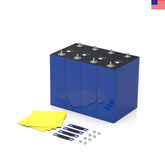

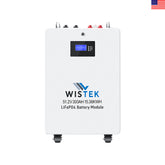
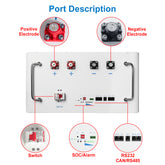
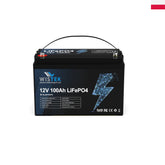

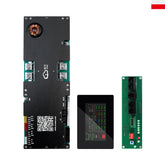

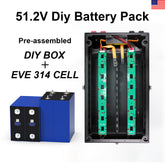

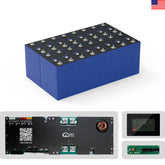



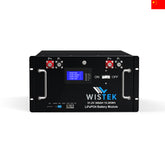
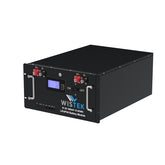






Leave a comment
All blog comments are checked prior to publishing